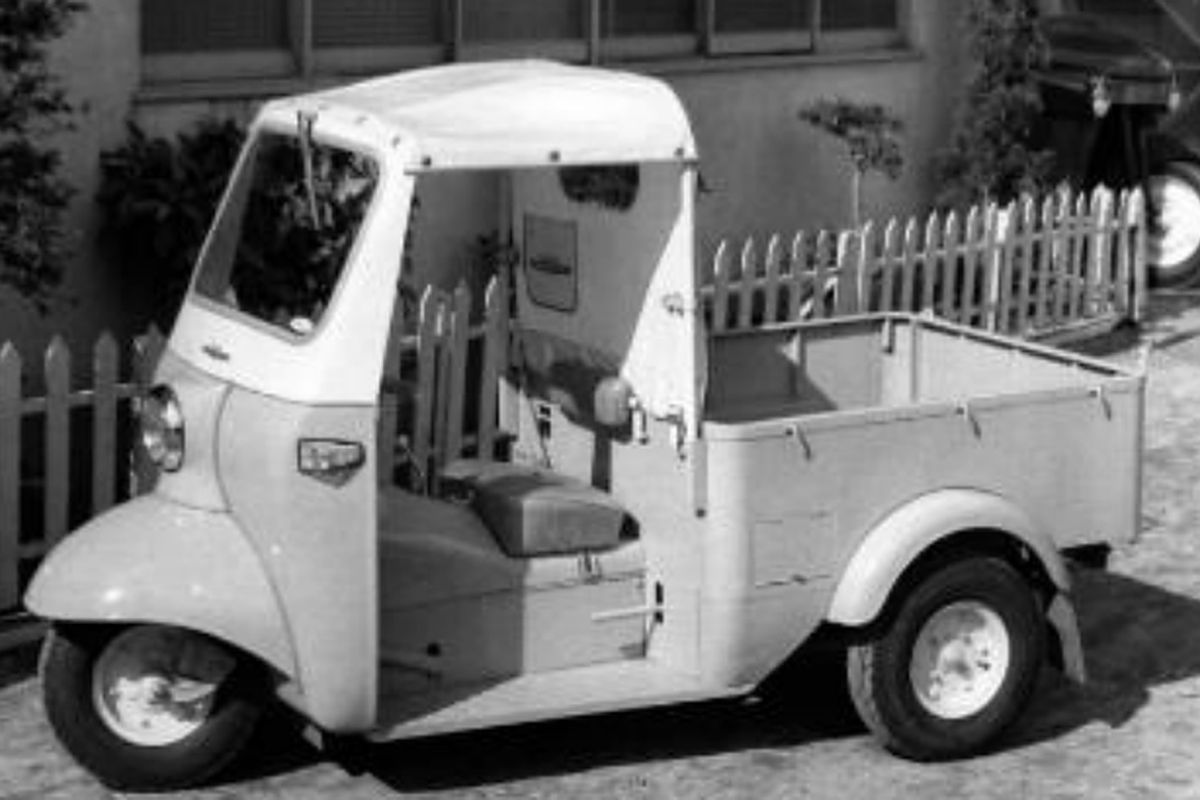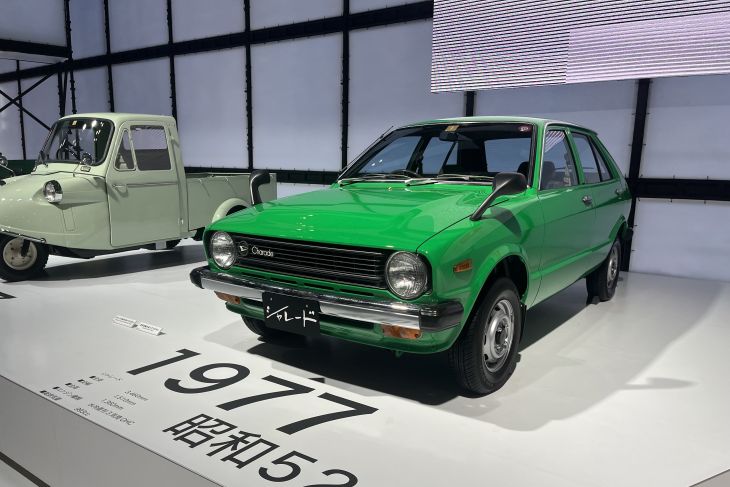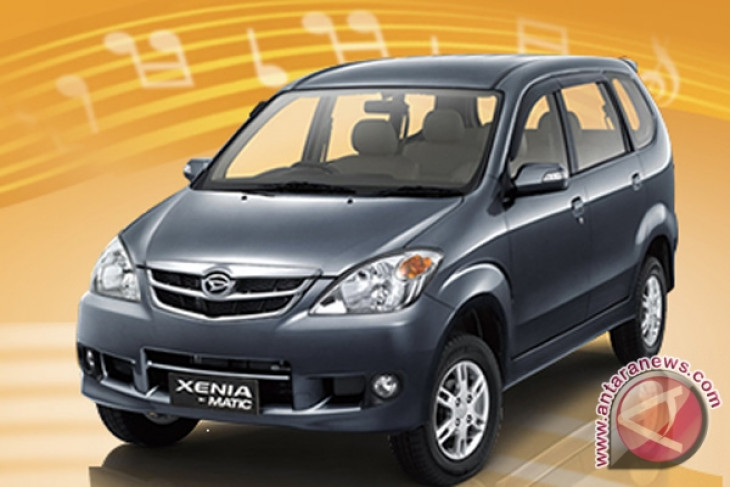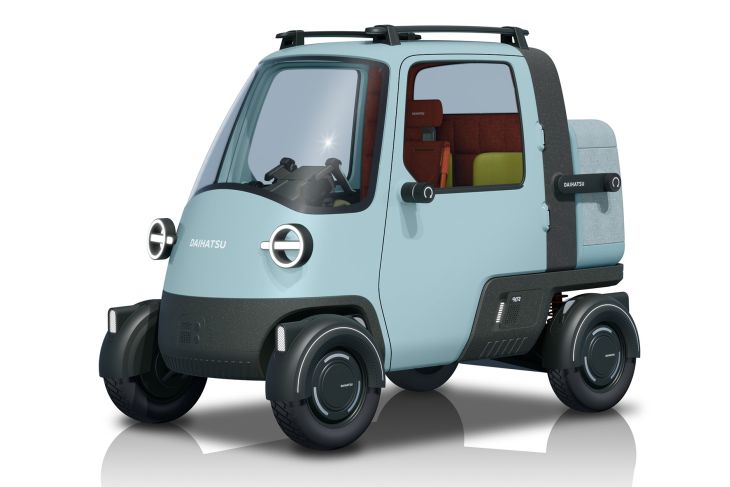
Jakarta (ANTARA) – For decades, Daihatsu has been the vehicle of choice for many people in Indonesia, from small businesses to families.
However, do you know the first car released by Daihatsu? The following is a review of his story from the beginning of his journey to what he is today.
The beginning of the first Daihatsu car
Daihatsu was first established in Japan in 1907 under the name Hatsudoki Seizo Co., Ltd.. Initially, this company was engaged in the production of steam boiler engines for factories and ships.
Subsequently, starting in the 1930s, the company began developing diesel engines and internal combustion engines for small motor vehicles. Starting from here, the embryo of Daihatsu as a car manufacturer was born.
In 1950, Daihatsu introduced a tiny three-wheeled vehicle called the Daihatsu Tsubasa.
Due to high consumer interest, it was redeveloped as the Daihatsu Midget. This car was also the company’s first car.
This model immediately attracted attention for its small but functional size. The Midget is designed to help small businesses, especially as a light vehicle for transporting goods in urban areas of Japan.
Daihatsu Midget in Indonesia: the legendary “Bemo”
Daihatsu first began marketing the Midget in Indonesia in 1957. Although the official name remains Daihatsu Midget, Indonesians know it better as “Bemo”.
This nickname is very attached because this small three-wheeled car is widely used as public transport in various cities and transports goods, and was even included in the Asian Games IV in Jakarta.
Despite its small dimensions, namely 2,540 mm long, 1,200 mm wide and 1,500 mm high, the Midget is capable of carrying two adults or cargo weighing up to 300 kilograms.
With a maximum speed of around 65 km per hour, this vehicle represented an efficient solution for community mobility at the time.
At the beginning of its launch in Indonesia, Daihatsu introduced two types of cars, namely the Midget I and the MP4 model.
Several years later, in 1996, Daihatsu again introduced its first four-wheel car version, the Midget II, which was the successor to the previous generation.
After the Midget’s heyday, Daihatsu continued to expand its product line. In the late 1960s, the company launched several new models such as the Fellow L37, the Fellow Max Hartop and Non-Hartop, the Fellow Buggy and the Daihatsu Max Cuore.

In 1977, Daihatsu again attracted the public’s attention by introducing the Daihatsu Charade, a car with a three-cylinder 1,000 cc engine capable of producing 55 HP of power at 5,500 rpm and maximum torque of up to 75 Nm at 3,200 rpm.
With modern design and high performance, Charade has become a milestone in the birth of automobiles sedan by Daihatsu and lasted until the early 2000s.
In the 1980s and 1990s, Daihatsu introduced the Hijet and Zebra, two models known for being economical, practical and easy to maintain.
These cars are in great demand among entrepreneurs, from small traders to distribution companies. Starting in the 2000s, Daihatsu began to focus on providing multi-purpose family and commercial vehicles.

In 2004, Daihatsu Xenia is the favorite car of Indonesian families.
Three years later, Daihatsu introduced the Gran Max in 2007. This car was quickly accepted by the market due to its large load capacity and good fuel efficiency, so it is widely used by SMEs and the logistics sector.
In 2013, Daihatsu launched Ayla, a small and eco-friendly car, suitable for urban activities. This car is also an option because it is fuel efficient.
Then, in 2016, the Daihatsu Sigra was born, a seven-passenger family car included in the Low Cost Green Car (LCGC) program.
Innovation and rebirth of the Daihatsu Midget

Over the past two decades, Daihatsu has continued to innovate by developing environmentally friendly vehicles.
This company has managed to design various models of electric and hybrid cars, as well as develop fuel efficiency technology that can reduce carbon emissions.
2025 will be a special time for Daihatsu. The company plans to bring back its legendary icon in a modern version, namely the Midget X, at the 2025 Japan Mobility Show.
Unlike its predecessor, the Midget X presents itself as a small electric vehicle with a retro-modern look.
The characteristics of the car are maintained, namely the small design plus the innovation of the round LED headlights, the convex windscreen reminiscent of a helicopter and the semi-open alloy wheels with integrated lights.
Inside the cabin there is a steering wheel flanked by two passenger seats, as well as various other innovative features such as a backpack-style storage space, a folding bed in the rear and a hinged rear door with a swing handle.
With its small and flexible shape, the Midget of the simple men’s 50s vehiclesAS developing as a future electric car that fits today’s modern lifestyle.
Read also: History and development of the Mitsubishi MIVEC engine
Read also: 25 years of history of the Honda CR-V, from the LX type to hybrid engines
Read also: History of the Maserati Tipo 300S
Reporter: Princess Atika Chairulia
Publisher: Alviansyah Pasaribu
Copyright © ANTARA 2025



